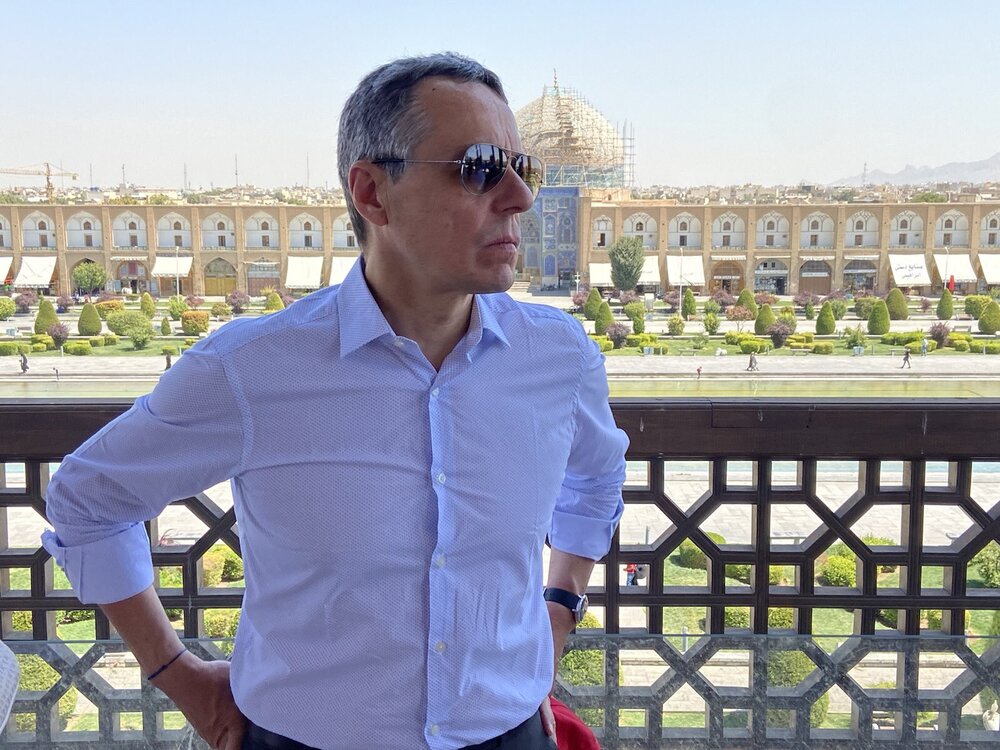Isfahan ‘a pearl in the Middle East’: Swiss FM

TEHRAN – Swiss Foreign Minister Ignazio Cassis called the ancient Iranian city of Isfahan ‘a pearl in the Middle East’ on his official Twitter account after his one-day trip to the city on Saturday.
“Visit to the city of Isfahan - a pearl in the Middle East. Knowing the culture and people of a country: a prerequisite for good diplomatic relations,” the tweet reads.
Cassis paid a visit to the UNESCO-registered Naqsh-e Jahan Square and some other historical sites of the ancient city.
He also met with Bishop Sepian Kashchian, the Bishop of the Armenians of Isfahan and southern Iran, at the centuries-old Vank Cathedral.
Cassis will then continue his travel to Tehran today to mark the centenary of Swiss-Iranian diplomatic relations.
Soaked in a rich history and culture, Isfahan was once a crossroads of international trade and diplomacy in Iran. Now, it is one of Iran’s top tourist destinations for good reasons. The ancient city is filled with many architectural wonders such as unmatched Islamic buildings, bazaars, museums, Persian gardens, and tree-lined boulevards. It’s a city for walking, getting lost in its mazing bazaars, dozing in beautiful gardens, and meeting people.
The city has long been nicknamed as Nesf-e-Jahan which is translated into “half the world”; meaning seeing it is relevant to see the whole world. In its heyday, it was also one of the largest cities in the region with a population of nearly one million.
Isfahan is renowned not only for the abundance of great historical bridges but also for its ‘life-giving river’, the Zayandeh-Rood, which has long bestowed the city an original beauty and fertility. The cool blue tiles of Isfahan’s Islamic buildings, and the city’s majestic bridges, contrast perfectly with the encircling hot, dry Iranian countryside.
The huge Imam Square, best known as Naghsh-e Jahan Sq. (literary meaning “Image of the World”), is one of the largest in the world (500m by 160m), and a majestic example of town planning. Built in the early 17th century, the UNESCO-registered square is punctuated with the most interesting sights in Isfahan.
The Vank Cathedral (locally called Kelisa-ye Vank) is widely referred to as an everlasting masterpiece of architecture.
Located in the New Jolfa district of Isfahan, central Iran, the Cathedral harmoniously blends Islamic motifs and elements with those of Armenians. Vank means “monastery” or “convent” in the Armenian language.
Constructed in the first half of the 17th century during the Safavid rulers, Kelisa-ye Vank is a historic focal point of the Armenian Church in Iran.
Modern Isfahan is now home to some heavy industry, including steel factories and a nuclear facility on its outskirts, however, its inner core wants to be preserved as a priceless gem.
ABU/MG
